The students and postdoctoral researchers who work and train in MSK’s laboratories drive discovery forward every day. Today they are vital partners. Tomorrow they will lead further progress at hospitals, research centers, and biomedical companies around the world.
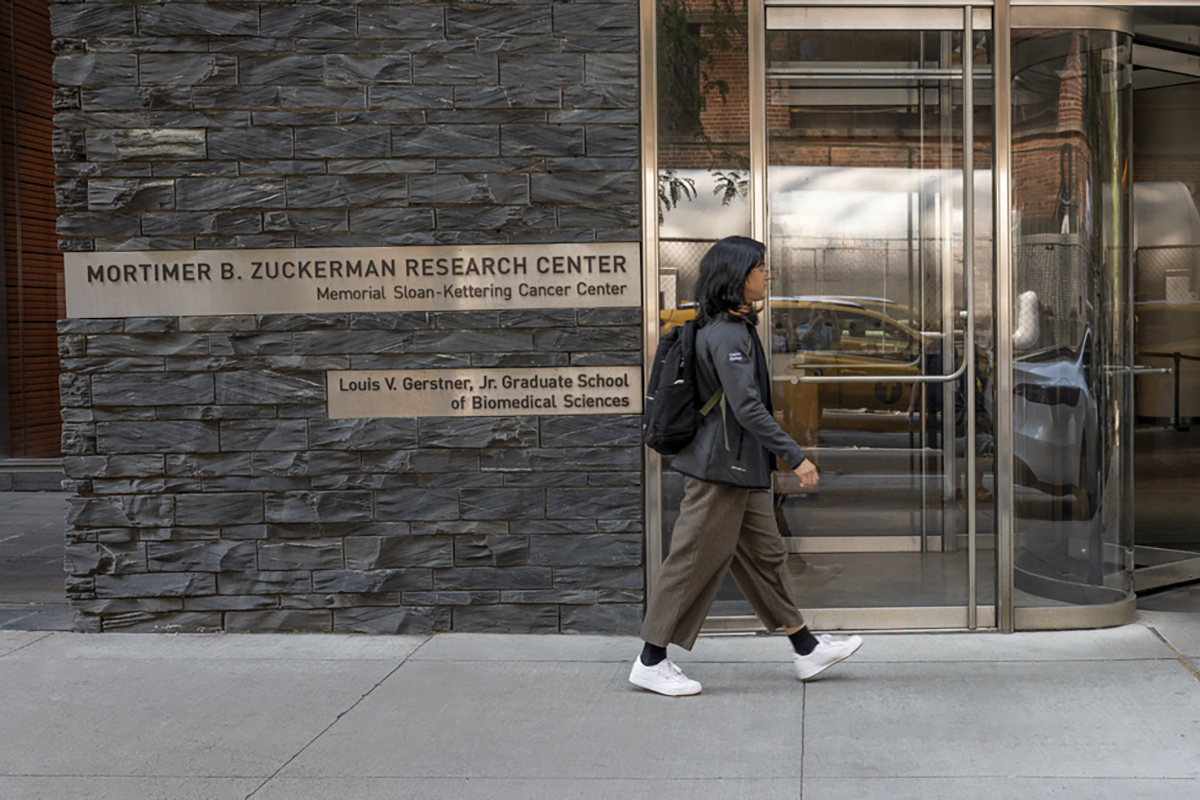
Graduate student Monica Acosta enters the Zuckerman Research Center to start her day in the lab.
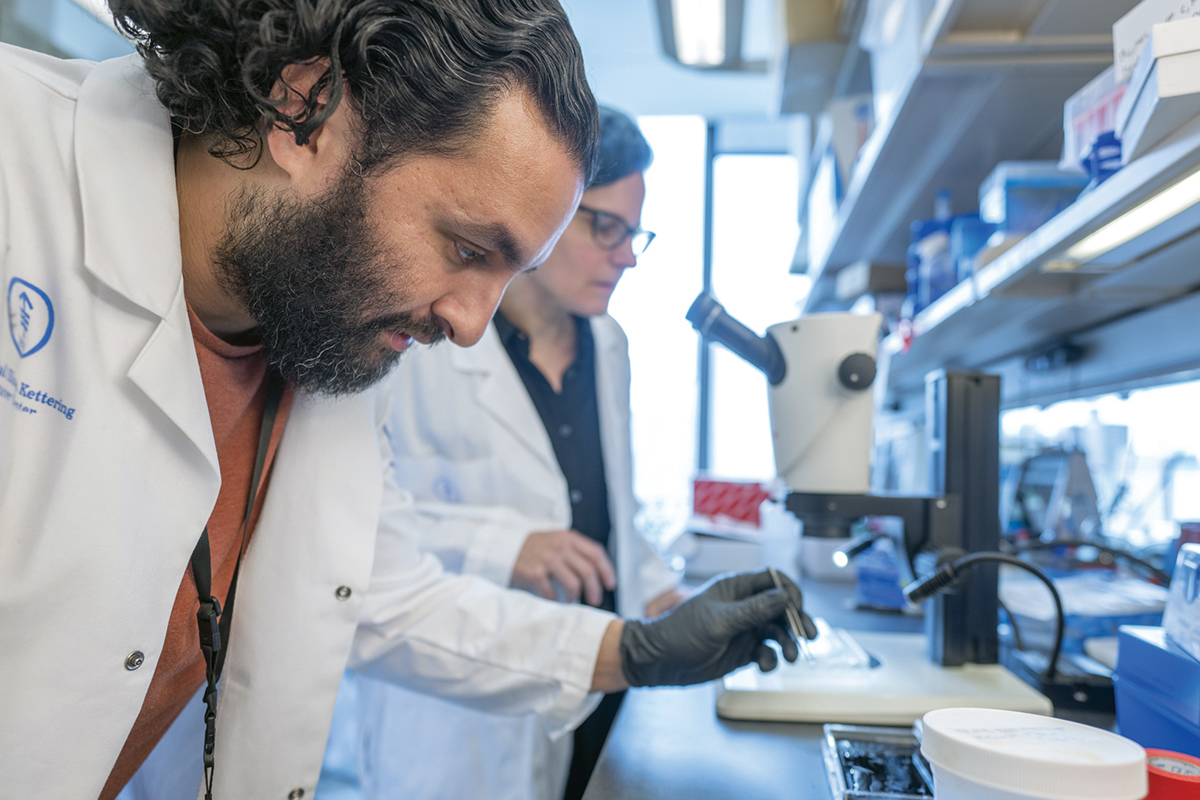
Mihir Pendse, PhD, left, in the lab with immunologist Gretchen Diehl, PhD. The Diehl Lab studies how gut microbes train the immune system.
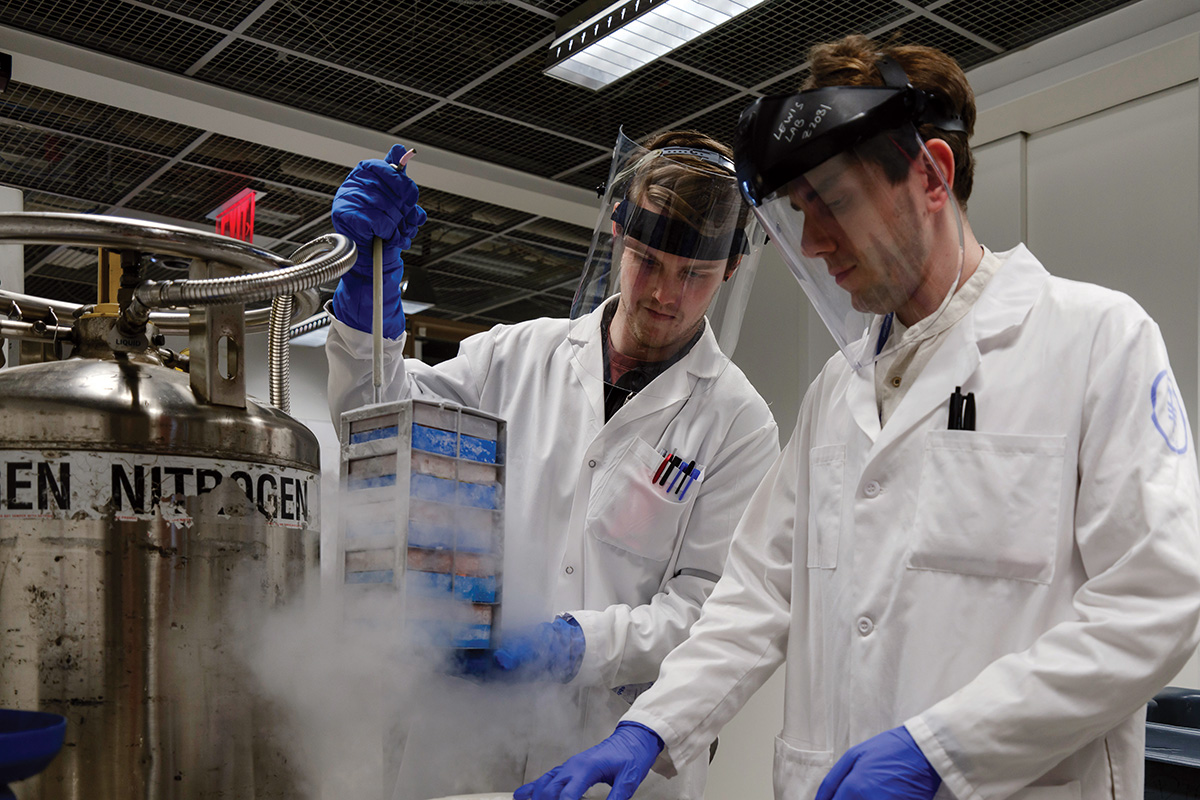
Graduate student Justin Hachey, left, prepares to work with frozen samples, alongside research fellow Michele De Franco, PhD. The work is part of the Jason Lewis Lab’s efforts to develop new approaches for the targeted diagnosis and treatment of cancer.
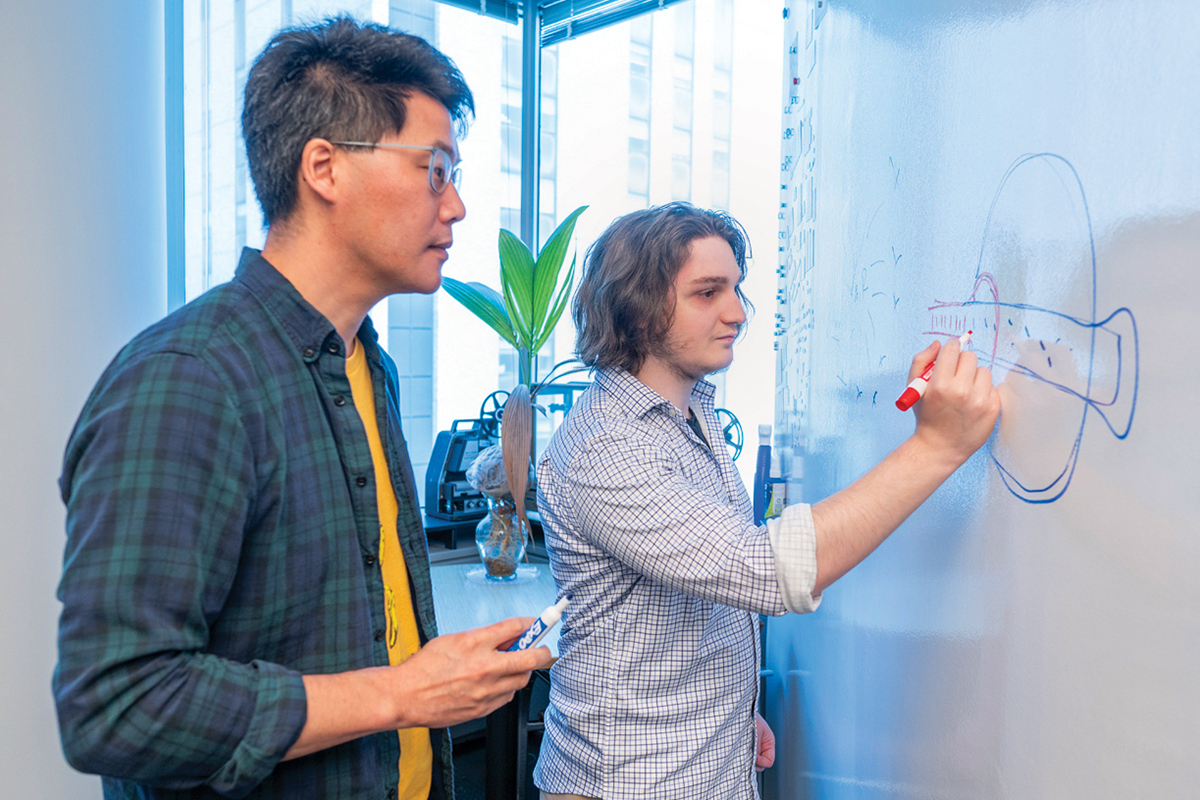
Developmental biologist Eric Lai, PhD, discusses a research project with graduate student Mir-Mammad Javad-Zada. The Lai Lab studies how cells orchestrate behaviors so they happen at the right times and in the right places.
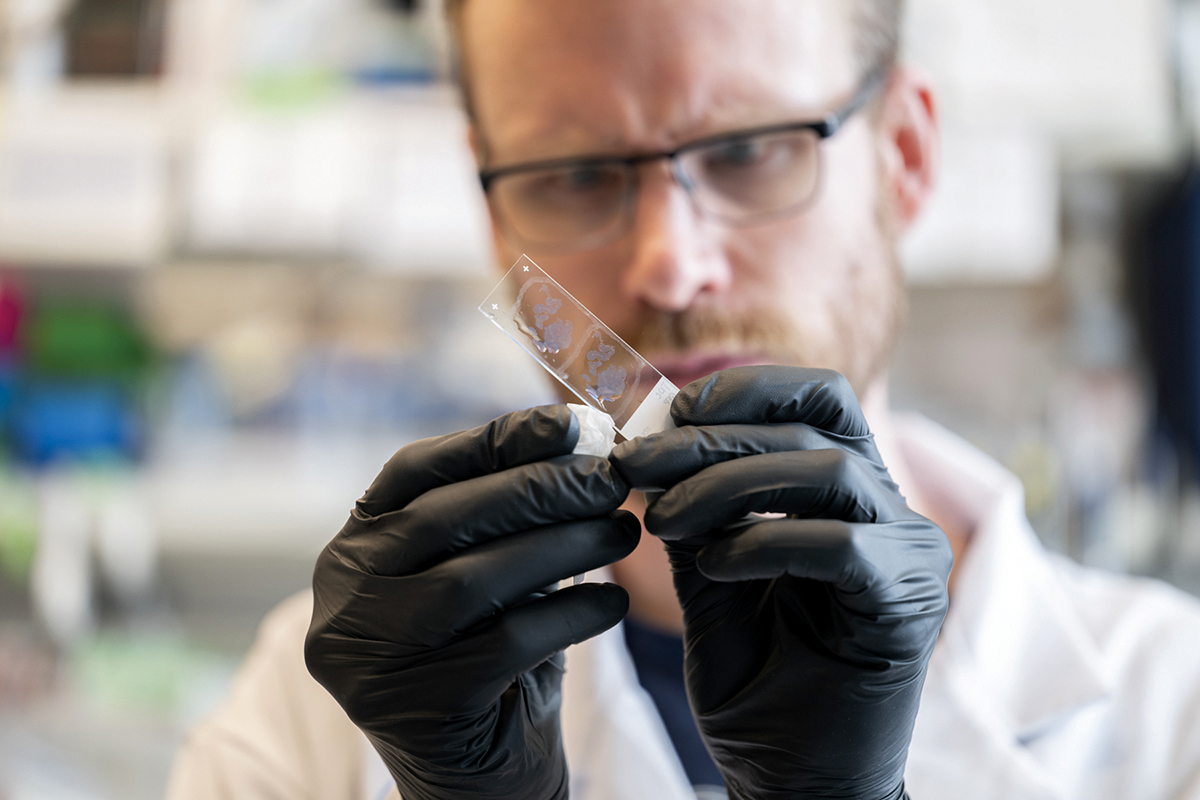
Postdoctoral fellow Frank Arnold, PhD, prepares a slide as part of the Mara Sherman Lab’s research into pancreatic cancer.
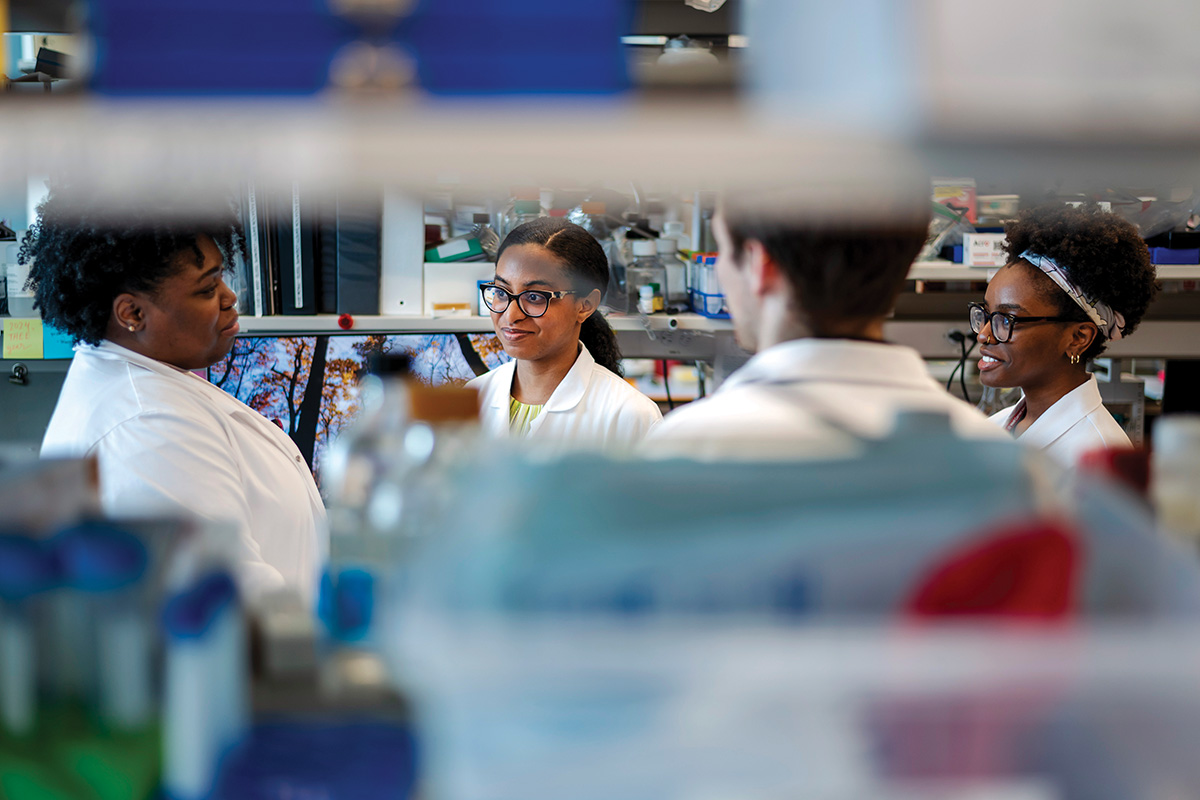
Members of the Jason Lewis Lab discuss research to improve the detection and treatment of cancer cells. Left to right: research scholar Shaniqua Hayes, PhD; research scholar Candace Parker, PhD; graduate student Justin Hachey; and graduate student Olufolake Majekodunmi.
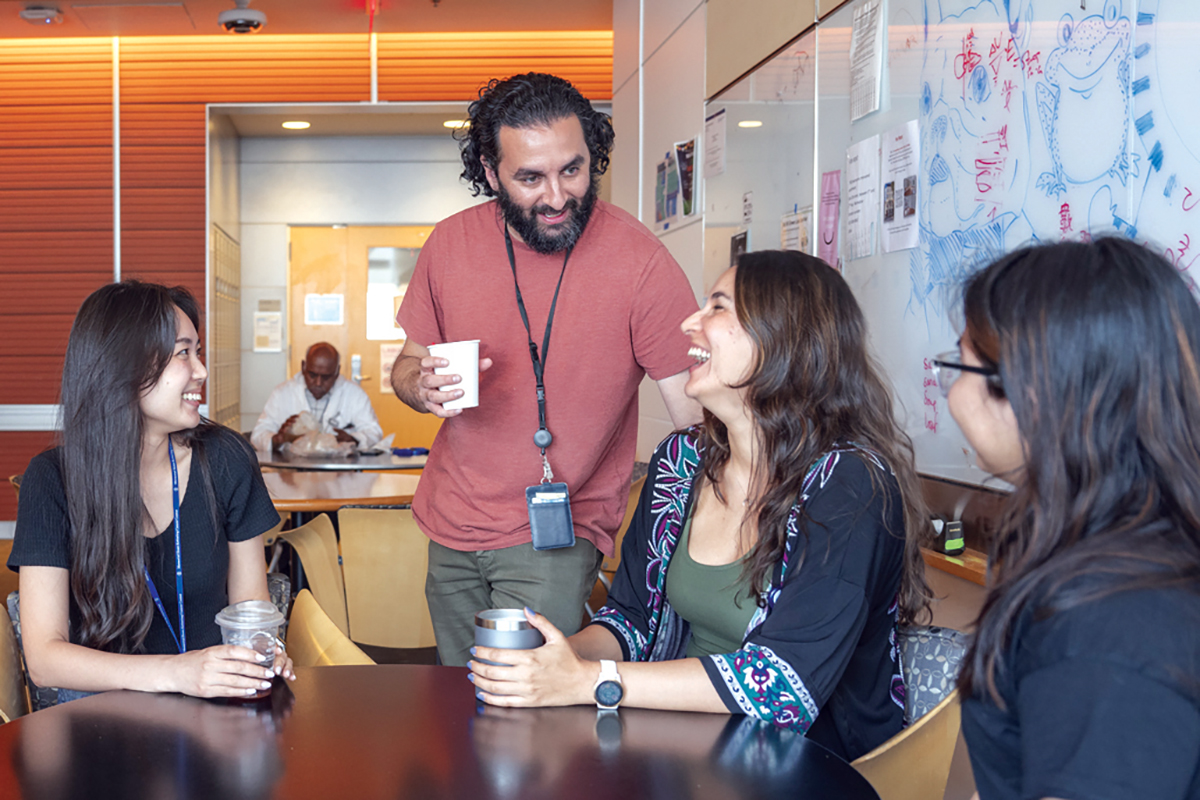
Lounge spaces allow trainees to foster collaboration and camaraderie outside the lab, too. From left: graduate student Dasom Kim; research scholar, Mihir Pendse, PhD; research scholar, Sofia Tortora Morel, PhD; and research technician, Lisette Peres-Tintin.

Research scholar Yanan Ma, PhD, prepares to review a sample under the microscope. The work is part of the Philipp Niethammer Lab’s study of wound healing, inflammation, and regeneration